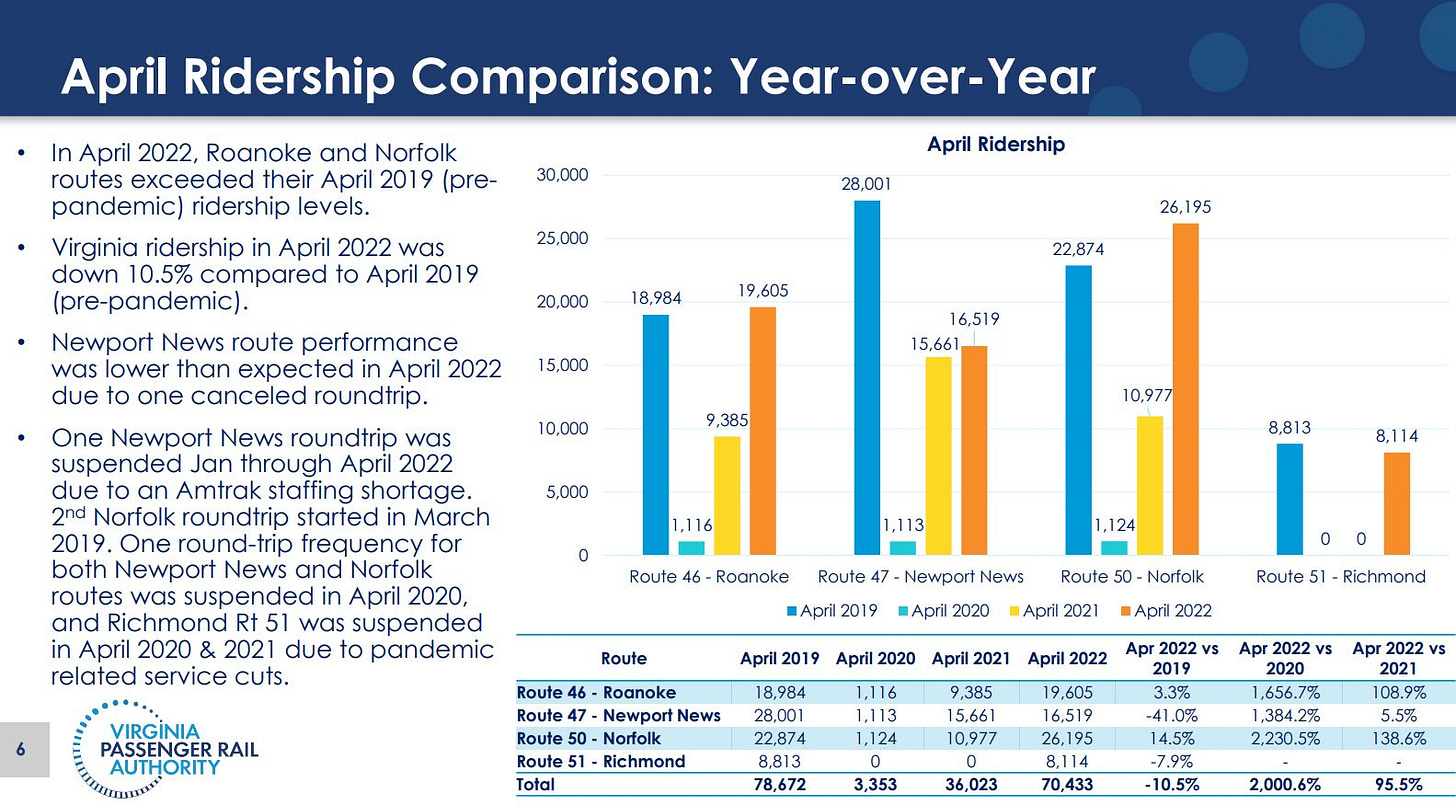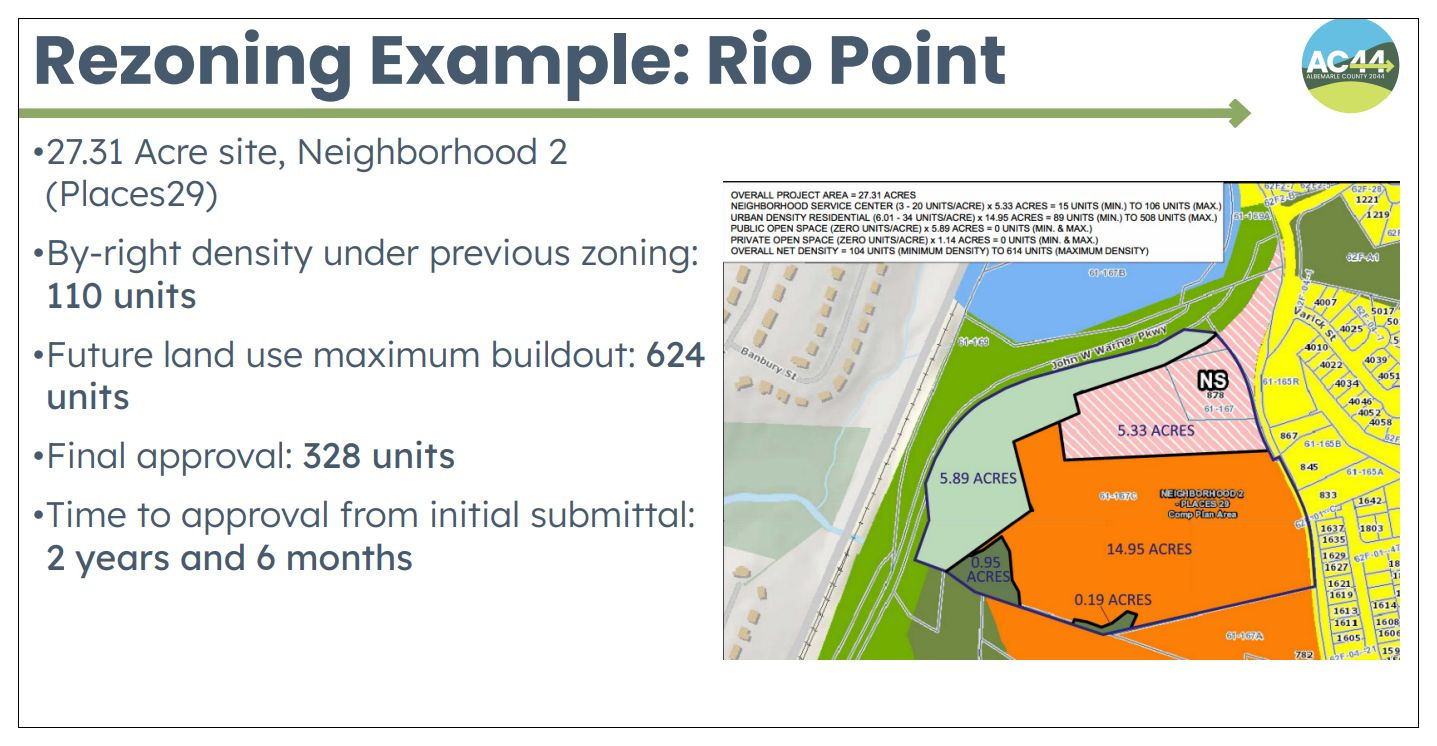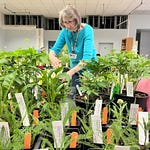Five times five is 25, but two times two is not 22. Yet somewhere in this sentence are all the ingredients to tell you it is May 25 of the current year. Like most things in life, there are no easy solutions to intractable problems, and resources are often hard to find or arrange in the right way. But we must try to solve them anyway. This is Charlottesville Community Engagement and I’m your host, Sean Tubbs.
On today’s program:
Governor Youngkin orders flags at half-mast in memory of the 19 children and two adults murdered by a young adult with access to military-grade weaponry
A second daily train between Roanoke and D.C. could launch this July
Albemarle Planning Commission reviews a report about how well the county’s development areas are filling in
First shout-out is for LEAP’s new Thermalize program
In today’s first Patreon-fueled shout-out: Have you been thinking of converting your fossil-fuel appliances and furnaces into something that will help the community reduce its greenhouse gas emissions? Your local energy nonprofit, LEAP, has launched a new program to guide you through the steps toward electrifying your home. Thermalize Virginia will help you understand electrification and connect you with vetted contractors to get the work done and help you find any rebates or discounts. Visit thermalizeva.org to learn more and to sign up!
Flags at half-mast to mourn the children killed in Uvalde, Texas
Governor Glenn Youngkin has ordered that flags at public buildings in Virginia be flown at half-staff from now until May 28 “in respect and memory of the victims of the Robb Elementary School shooting in Uvalde, Texas.”
As of this reporting, nineteen elementary school students and two teachers stopped living after the fast-moving bullets tore through their unprotected bodies, rendering it impossible for them to sustain life. The lone gunman carried a handgun and an AR-15 style assault rifle. Earlier in the day, the assailant shot and wounded his grandmother.
Earlier this year, attempts were made in the General Assembly to repeal legislation that passed in 2020 to place some limits on firearms. Those successful efforts in 2020 included a bill that allowed localities to prohibit the carrying of firearms on public-owned land in buildings. Delegate Tim Anderson (R-83) introduced a bill this year to repeal that effort, but it did not make it out of the House Committee on Public Safety. (HB26)
Anderson also sought to lower the penalty for a second violation of carrying a concealed weapon without a permit from a Class 6 felony to a Class 2 misdemeanor. That passed the House of Delegates on a 53 to 46 vote but did not make it out of the Senate Public Safety Committee. (HB11)
Another bill that passed the House of Delegates would have shortened the time the Department of State Police would be required to complete a background check on a firearms transfer from five to three days.
“If a dealer who has otherwise fulfilled all requirements is told by the State Police that a response will not be available by the end of the dealer's third business day, the dealer may complete the sale or transfer without being deemed in violation,” read the summary of HB204.
The bill from Delegate Otto Wachsmann (R-75) passed the House on a 51 to 48 vote. The Senate Judiciary Committee passed the bill by indefinitely.
Another bill that passed in 2020 made it possible for an attorney or officer of the court to file an emergency order that if granted would prohibit an individual who posed “substantial risk” from possessing, purchasing, or transporting a firearm. A bill from Delegate Marie March (R-7) to eliminate this possibility passed the House of Delegates on a 52 to 47 vote but the Senate Judiciary Committee passed the bill by. (HB509)
There is one firearms related bill pending in the 2022 Special Session of the General Assembly. HB1306 introduced by Delegate Marcus Simon (D-53) would make it unlawful to remove or alter a serial number on a firearm. That passed the House of Delegates on a 94 to 3 vote with one abstention. The Senate passed the bill on a 31 to 9 vote. Three Senators and three Delegates are the conferees working to reconcile the two versions of the bill. The General Assembly returns on June 1.
The National Rifle Association is active in campaign finance in the Commonwealth, according to the Virginia Public Access Project. In 2021, the organization contributed $93,250 to candidates. All of them are Republicans.
Since 1997, the NRA has contributed $1.16 million to Republican candidates and groups, and $91,222 to Democratic groups and candidates. Another $4,750 went to Delegate Watkins Abbitt who served from 1986 until his retirement before the 2012 General Assembly. Abbitt was a Democrat until becoming an independent in 2001.
For more on the response to this latest mass-shooting in America from Virginia politicians, read Brandon Jarvis’ Virginia Political Newsletter.


Second passenger train may begin operating this July
It has been nearly a dozen years since Amtrak running daily service through Charlottesville and we are perhaps months away from when a long-awaited second train will begin work. This week, the Virginia Passenger Rail Authority’s Board of Directors met and got an update from executive director D.J. Stadtler, who said a deal with Norfolk Southern has to be closed. He expects that to happen next month or early in July. (meeting material)
“It’s only when that close takes place that we can start the new service,” Stadtler said. “There are three trains waiting for that close. One is the new Roanoke train which would be the second-round trip. One is the [third] Newport News train that was paused due to COVID/Amtrak staffings issues. And then the third one is the new Norfolk train.”
Construction of a new bridge to cross the Potomac River will not be needed before it begins, but Stadtler said VPRA is applying for $300 million in federal funding to help cover some of the $2 billion cost of Long Bridge expansion project.
Stadtler also said ridership is rebounding after the pandemic on all routes.
“If you look at the April ridership, we’re up over 25 percent over the previous month,” Stadtler said. “‘Normal’ times you would see an increase from March to April of about eight percent so this is a huge increase showing that folks are getting back on the train.”
Ridership on the Roanoke train in April 2019 was at just under 19,000 but plummeted to 1,116 in April 2020 and rebounded to 9,385 in April 2021. This year ridership was at 19,605 for the month.
Hat tip to WDBJ-7 for the original reporting that prompted this story.
Watch the full meeting here:
Shout-out to Camp Albemarle
Today’s second subscriber-supported public service announcement goes out to Camp Albemarle, which has for sixty years been a “wholesome rural, rustic and restful site for youth activities, church groups, civic events and occasional private programs.”
Located on 14 acres on the banks of the Moorman’s River near Free Union, Camp Albemarle continues as a legacy of being a Civilian Conservation Corps project that sought to promote the importance of rural activities. Camp Albemarle seeks support for a plan to winterize the Hamner Lodge, a structure built in 1941 by the CCC and used by every 4th and 5th grade student in Charlottesville and Albemarle for the study of ecology for over 20 years. If this campaign is successful, Camp Albemarle could operate year-round. Consider your support by visiting campalbemarleva.org/donate.
Albemarle Planning Commission briefed on build-out analysis
For the past six months, Albemarle staff have been working behind-the-scenes on the update of the Comprehensive Plan, which will be conducted in four phases. Rachel Falkenstein is a planning manager with the county.
“And the first phase is Plan for Growth where we are evaluating the current growth management policy and we’re using the theoretical maximum build-out of the county’s development areas based on the current land use plan from our 2015 plan to determine what the maximum build-out could be of those development areas,” Falkenstein said.
Falkenstein said the question is whether there’s enough land to accommodate the population growth expected over the next 20 years. There is also an effort to look at whether there’s enough land to meet the county’s goals for economic development.
This is the first time the county has contracted out the build-out analysis to a third party.
Kimley-Horn was hired and Jessica Rossi is a planner with that firm. She explained some of the methodology.
“Our first step was to identify parcels that may have development or redevelopment potential,” Rossi said. “The way that we did this is we looked at a very high level the value of land and the value of improvements.”
If the land value was greater than the improvements, Rossi said that designated it as land with development potential. A second step was to factor in location, environmental constraints, size of the land, and who owned it. Another was to look at the list of projects that are in the development pipeline.
“We removed properties that were either approved or under review from our model and inputted what we know the yield of those projects, the maximum build-out yield of those projects are,” Rossi said. “One, to avoid double-counting of those projects but [also] to use the total build-outs that we know have been approved.”
Then forecasts were developed that take into account the past ten years of development activity, combined with real estate performance as well as three sets of population projections.
Rossi said the growth area currently has about 9,377 units that are approved but not yet built. They also looked at the number of units currently under review which totals 5,504.
“That led to a total buildable unit figure of over 14,800,” Rossi said.
Rossi said when you look at land that has not yet been through the rezoning process, there are an additional 9,265 units.
“When you put these two numbers together, that total exceeds 24,000 residential units,” Rossi said.
Between 2010 and 2021, the average number of units built is 646. The ten year forecast anticipates between 6,000 and 7,500 new units, and the twenty year forecast is between 11,500 and 13,500.
Rossi said not all development areas are the same. What’s known as Neighborhood 6 has no units pending for review whereas the Hollymead community has the potential of about 6,350 new units.
That figure of 9,265 units assumes that development comes in at the maximum allowed under the current Comprehensive Plan designation. Rezonings or special use permits would be required to make that happen, and those approvals are not always guaranteed.
“Looking at rezonings approved from 2016 through 2021, the total density approved was approximately 58 percent of the maximum density recommended per future land use designations,” said county planner Tori Kanellopoulos.
For instance, the Rio Point project approved by Supervisors last year could have had a maximum of 624 units but only 328 were approved. Old Trail in Crozet was approved in 2005 for between 1,600 and 2,200 units, but the final build-out will only be around 1,200 units.
Hunter Wood of the United Land Corporation said it is very difficult to get the maximum amount of units available under the Comprehensive Plan.
“Costs have gone through the roof and a lot of that cost is two years of rezoning to go through the county and to start off at 500 units and you get beaten and come in here and get whipped and beat and you walk out with 250,” Wood said.
Wood said he would love to be able to build those 6,000 units in Hollymead and his company still has a lot of undeveloped land there.
“I personally, probably a little biased, think the growth area needs to be expanded,” Wood said. “I have some property that water and sewer is away from me yet I have a road that has a boundary that no one wants to cross.”
Wood referred to Somerset Farms, a 1,900 unit development on Route 20 south of I-64 for which a growth area expansion was recommended to be voted down by the Planning Commission in October 2011.
Commissioners were asked one simple question: Does our current Growth Management Policy provide opportunities to meet housing and non-residential needs for growth over the next 20 years?
Commission Chair Karen Firehock said unit amounts are often reduced during the rezoning process because of concerns brought forward by other community members.
“A lot of times it has to do with schools and traffic and I really can’t answer this question without knowing what kind of traffic would that put on our roads, how many schools would be needed to realize X number,” Firehock said.
Commissioner Julian Bivins said one question is whether people who live in Albemarle really want density.
“Everybody comes out and talks about how they don’t want to walk their dog next to those people, or they don’t want to get run over when they cross that street,” Bivins said. “So the whole idea is that the community has got to get better with density. If that doesn’t happen, we have all we need.”
Bivins said he would like to see conversations about creating transition zones that are between rural and growth areas. He also certain projects could have been much taller to allow more units.
Commissioner Daniel Bailey suggested the county also needs to better understand how the lack of available land could be forcing people to live outside.
“I’ve employed many employees that live in Lake Monticello and drive in and would love to live in Charlottesville but it’s too expensive,” Bailey said. “I don’t know how we get to that understanding.”
Another growth management work session will be held with the Planning Commission next month.
Luis Carazanna and Corey Clayborne were not present at the meeting. There is a vacancy for a representative of the White Hall District.

















Share this post